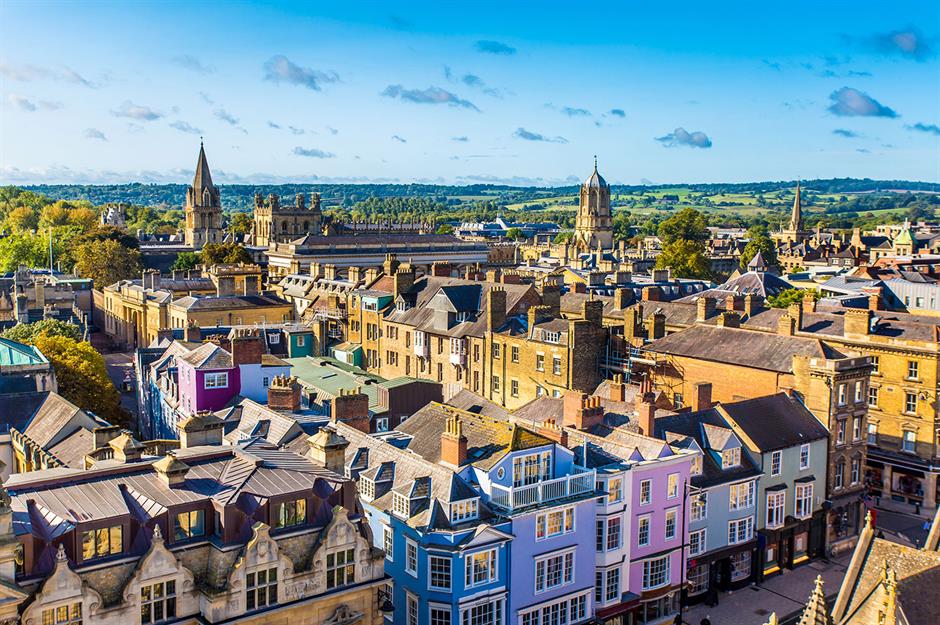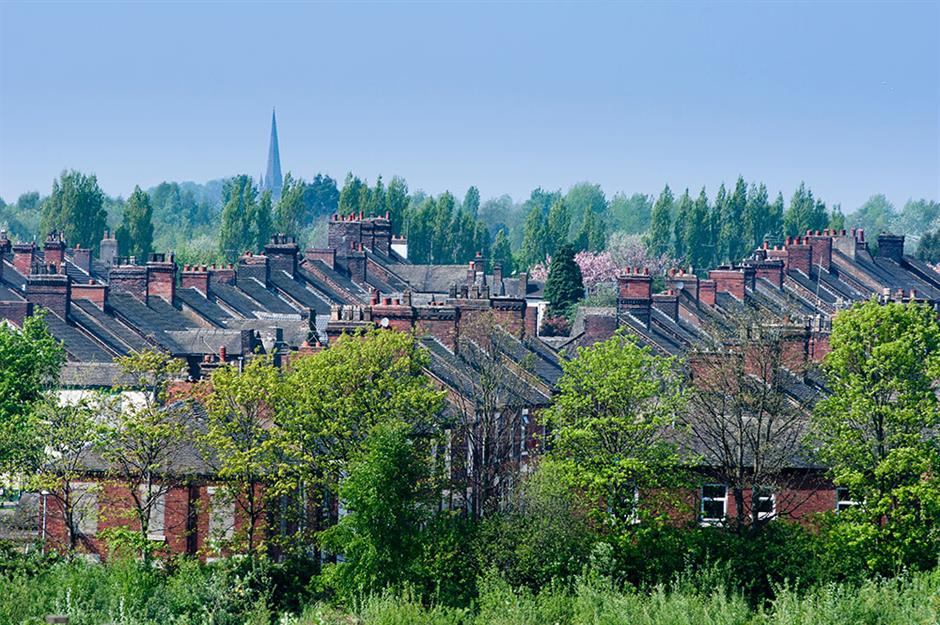The UK’s safest and most dangerous cities to live in
How the UK's major cities rank according to safety
Looking to move to a new city? Before you start Googling house prices, you might want to do some research on other crucial aspects of city life, such as crime levels. According to research by Get Licensed, a recruitment and training company for the security industry, here are the cities and towns where residents feel safest, and the ones where they feel least safe. Click or scroll on for more...
Stoke-on-Trent: 10th safest place to live
To create its UK Safety Index, Get Licensed pulled data from a range of sources, including Numbeo, a global database of quality of life information, to assess how safe the residents of 50 of our most populated large towns and cities feel, particularly after dark. The good news for those looking to buy in Stoke-on-Trent is that based on this data, the Midlands city has made it into the top 10 safest places to live. Teamed with average house prices of just over £150,000, we think this makes it an attractive prospect.
Swansea: 9th safest place to live
Among factors compared between towns and cities was a ‘perceived safety score’, based on how worried residents felt about being mugged, attacked, or targeted by a hate crime. In Swansea, residents feel even safer than those in Stoke-on-Trent, and when combined with actual crime data, the Welsh city came in ninth place. With house prices averaging £188,000 and on the up, it could be a smart place to buy.
Oxford: 8th safest place to live
The city of dreamy spires and historic homes really is as idyllic as its reputation suggests, and crime dramas based here can’t convince us otherwise... Drug crimes and robberies are both particularly low here, though its average house price of over £580,000 is steep. Still, if you can afford it, it’s nice to know you can wander its well-heeled streets reasonably carefree of an evening.
Exeter: 7th safest place to live
Robberies in Exeter in the picturesque county of Devon are also exceptionally low and house prices are below the national average, with homes going for an average of £314,000 over the past year. With access to moors, beaches and a buzzing city centre, it’s also a rather appealing city to buy a house in.
Reading: 6th safest place to live
While residents in leafy Reading are quite concerned about walking home alone, their concerns aren’t really backed up by crime statistics, which are reasonably low. Overall, Reading takes the 6th spot when it comes to safety, and with an easy commute to London plus average house prices of £384,000, it might be worth consideration.
Cambridge: 5th safest place to live
One element of city life in Cambridge that makes residents feel safe is its taxis. With CCTV a requirement for licensed cabs, locals can rest assured they will get home safely after a night on the town. At £566,000, house prices aren’t the cheapest here, but with a river running through it and beautiful architecture all around, you may feel it’s worth the investment.
Swindon: 4th safest place to live
Much maligned for being a boring city, and no stranger to ‘worst places to live’ lists, it might be time you give Swindon in Wiltshire another look, as its low crime statistics make it the fourth-safest location on our list. With average house prices just under £255,000 and proximity to the beautiful Cotswolds, it can’t hurt to take a closer look.
York: 3rd safest place to live
Not only is York a beautiful city, with medieval history around every street corner and lush countryside just outside the city’s walls, it’s also a very safe place to live, according to the UK’s Safety Index. It has the highest level of perceived safety among locals of anywhere on the list – particularly when walking home at night – and with average house prices at £305,000, it’s certainly piqued our interest.
Cheltenham: 2nd safest place to live
With low crime rates, including the lowest level of recorded street crime of anywhere listed, and a good rate of perceived safety among locals, Cheltenham in Gloucestershire takes second place in our rankings. Famous for its Regency architecture, house prices are still relatively low at £390,000, making it a relocation area to watch.
Warrington: the safest place to live in the UK
Due to a combination of a high level of perceived safety among locals and some of the most stringent taxi safety standards of any of the towns and cities mentioned, Warrington has been named the safest place to live in the UK. House prices average just £250,000 but it’s worth noting that it has a slightly higher rate of violent and sexual offences than any other place in the top 10.
Chelmsford: 10th most dangerous place to live
While the research highlights towns and cities that are safe, it also highlights places that aren’t deemed so safe. Despite residents of Chelmsford feeling very safe (it takes the third spot in terms of perceived safety), crime data and ratings for taxi safety tell a different story. With average house prices of around £394,000, you might feel it’s still worth a look though.
Leeds: 9th most dangerous place to live
This northern city may be known for its lively nightlife, canal walks and access to beautiful countryside, but its high levels of violent and sexual crimes and lack of confidence among locals bring its safety rating right down. House prices in the city average just £237,000 so you still may be able to find an area in the city that feels safer than some.
Huddersfield: 8th most dangerous place to live
Just 20 miles outside Leeds, Huddersfield scores even lower than its nearby city, with particular problems with drug crime and violent offences. However, it does have the most available taxis per head of any of the towns and cities on the list, and taxis here are considered reasonably safe. With average house prices of £201,000, it’s worth further investigation before you rule it out.
Wakefield: 7th most dangerous place to live
Oh dear, there seems to be a bit of a theme in West Yorkshire. Unfortunately, Wakefield does have the highest level of violent and sexual offences of any of the towns and cities, and drug crime is more of an issue here than elsewhere. With house prices averaging £256,000, it’s certainly something to consider before you buy.
Derby: 6th most dangerous place to live
Derby may be a bit of a commuter hub in the Midlands, with average house prices of £215,000 still making it a realistic option for many, but with a safety index score of just 3.16, you may have to ask yourself if it’s worth it. Nevertheless, its rich culture and historic buildings continue to prove a draw for some.
Colchester: 5th most dangerous place to live
This historic Essex town, which is increasingly popular with commuters, offers a good choice of Victorian properties but leaves much to be desired in terms of safety. Average house prices of £300,000 may tempt you, but if you want to live somewhere with plenty of licensed taxis and low rates of violent crime, you might want to reassess.
Bradford: 4th most dangerous place to live
The fourth West Yorkshire hotspot to make the top 10, residents of Bradford feel even more unsafe than elsewhere on the list. A lack of taxis may be a contributing factor but generally it scores low in terms of most safety factors. Average house prices are staggeringly low compared to Huddersfield and Leeds – just £147,000 – but it’s worth asking yourself why.
Nottingham: 3rd most dangerous place to live
There’s no two ways about it, residents of Nottingham don’t feel safe at night, largely due to quite high levels of robberies and drug crime, but also because they fear being attacked. With average house prices of £241,000, it’s worth looking around to see if some areas feel better than others.
Basildon: 2nd most dangerous place to live
According to the data, residents in Basildon, Essex have low confidence when it comes to safety after dark, plus the area recorded particularly high levels of drug-related crime. At £313,000, average house prices are a good deal cheaper than London for those looking to move out of the capital, and it’s close to Southend-on-Sea for days at the beach, but you may find this comes at a cost.
Doncaster: the most dangerous place to live in the UK
Doncaster in South Yorkshire has been named the UK’s most unsafe place to live by Get Licensed due to a very low perceived sense of safety among residents and high rates of violent and sexual crimes. Before you write Doncaster off, it’s worth noting that not all cities have been included – Manchester and Birmingham are notably absent – as data was not available, so if the low average asking prices of £181,000 have got your attention, then it’s still worth doing your own research.
Loved this? Follow us on Facebook for more property market news

